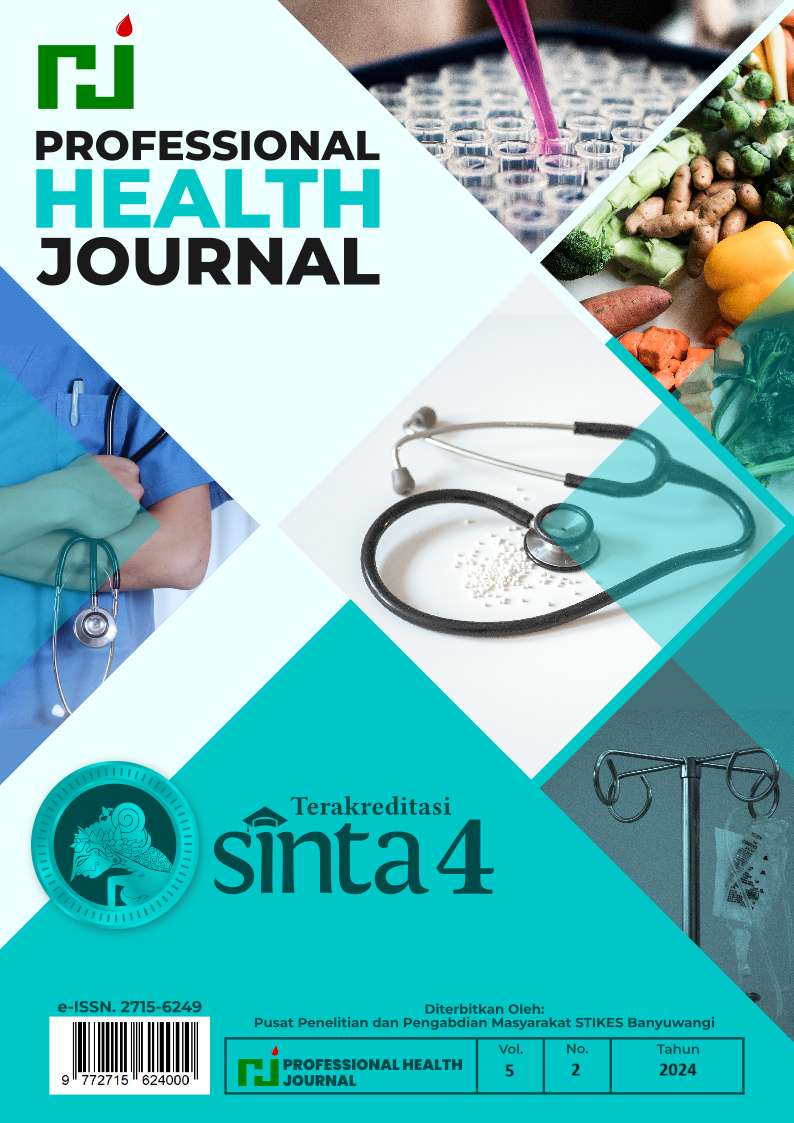Studi Prevalensi dan Faktor Risiko Penyebaran Penyakit Tuberkulosis Paru pada Warga Binaan di Lembaga Pemasyarakatan Kelas IIA Jember
DOI:
https://doi.org/10.54832/phj.v5i2.447Keywords:
lung tuberculosis, prison, prisonersAbstract
The World Health Organization (WHO) estimates that Mycobacterium tuberculosis, the single agent causing pulmonary tuberculosis (TB), infects 1.8 billion people, or around one-quarter of the world's total population. In Indonesia, there are an estimated 969,000 cases of pulmonary TB, including 443,235 reported cases. Prison is a high transmission site for pulmonary TB. Prison circumstances, such as high occupancy capacity, inadequate ventilation and nutrition, difficulties accessing health care, inadequate treatment, and weak patient immunity, are some of the variables influencing this. Knowledge on the origins, transmission, preventative strategies, and early diagnosis of pulmonary TB infection is essential for the prisoner in order to change attitudes toward pulmonary TB infection. This study used a descriptive approach to generate a description of the prevalence and risk factors for the spread of pulmonary tuberculosis in the Prison of Jember Class IIA. Based on the WHO-recommended screening technique, 4 male prisoners in the Prison of Jember Class IIA (8.5%) tested positive for pulmonary tuberculosis. There are various aspects that are difficult to include into environmental health standards, particularly infectious diseases like pulmonary tuberculosis, such as the density of people in a single cell room and the construction of the building and the services housed inside it. Policymakers must pay attention to the requirement to create appropriate isolation rooms and, at the very least, satisfy room standards for patients suffering from pulmonary tuberculosis.
Downloads
References
Dewi, C. et al. (2016) ‘Improving knowledge and behaviours related to the cause, transmission and prevention of Tuberculosis and early case detection: a descriptive study of community led Tuberculosis program in Flores, Indonesia’, BMC Public Health [Preprint]. Available at: https://doi.org/10.1186/s12889-016-3448-4.
Europe, W. (2007) ‘Health in Prison, a WHO guide to the essentials in Prison Health’.
Handayani, R. and Adnan, N.P. (2013) ‘Faktor Risiko Tuberkulosis Paru Pada Narapidana Di Lembaga Permasyarakatan Narkotika Jakarta Program Studi Kesehatan Masyarakat , Fakultas Ilmu-Ilmu Kesehatan , Departemen Epidemiologi , Fakultas Kesehatan Masyarakat , Universitas Indonesia Risk Factors O’, Jurnal Ilmiah Kesehatan Masyarakat, 11(9), pp. 194–198.
Houben RM, D.P. (2016) ‘The global burden of latent tuberculosis infec - tion: a re-estimation using mathematical modelling’, Plos medicine, 13: e10021.
Meintjes G et al. (2020) ‘Management of active tuberculosis in adults with HIV. The Lancet HIV [revista en Internet] 2019 [acceso 17 de agosto de 2020]; 6(7): 463-474.’, 6(7), pp. 1–26. Available at: https://doi.org/10.1016/S2352-3018(19)30154-7.Management.
Pamungkas, A.Y.F. et al. (2023) ‘Family support and coping strategies among female inmates: a cross-sectional study in penitentiaries’, Healthcare in Low-resource Settings [Preprint]. Available at: https://doi.org/10.4081/hls.2023.11736.
Snow, K.J. et al. (2020) ‘Adolescent tuberculosis’, The Lancet Child and Adolescent Health, 4(1), pp. 68–79. Available at: https://doi.org/10.1016/S2352-4642(19)30337-2.
WHO: Global Tuberculosis (2018) www.who.int/tb/publications/ global_report/en/ (last accessed on 1 August 2019).
Yanuar, A. and Pamungkas, F. (2019) ‘Hubungan Dukungan Sosial dengan Tingkat Stres pada Warga Binaan Pemasyarakatan Perempuan di Lembaga Pemasyarakatan’, 2(2), pp. 42–47.

















